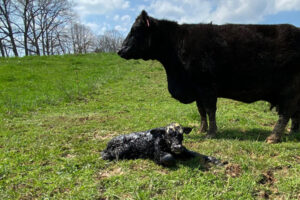Provide heat stress abatement for calves
Heat stress challenges everything on a dairy, with calves being near the top of the list. Young calves provide a unique challenge from multiple perspectives. Immature pulmonary systems and limited water or dry matter intake make it challenging for calves to reduce internal heat load. Panting is one of the primary mechanisms for heat exchange in cattle. Calves, with their underdeveloped lungs, are not as effective at this as cows and are at a heightened risk of metabolic acidosis as they try to blow off carbon dioxide and lose bicarbonate in saliva.
However, calves do have some biological advantages to fighting heat stress. Calves have a large surface area to body mass ratio, especially compared to cows, so calves can dissipate a heat load more readily. In addition, the physical size and activity of a calf’s rumen is quite minimal compared to mature ruminants, so the heat of digestion likely isn’t as significant. Despite this, calves may be more at risk for death in very hot conditions as they do not have the energy reserves of cows and are reliant upon an underdeveloped pulmonary and immune system to protect them.
HEAT STRESS MITIGATION MANAGEMENT TECHNIQUES
- Position housing to minimize direct sun exposure during highest temperature periods.
- Switch to inorganic bedding.
- Use shade cloth.
- Increase fat (energetic) content of milk.
- Supplement with electrolytes.
Management adaptions to help the calf combat heat stress are absolutely critical. Moving an appropriate amount of air across a calf without chilling them can be tricky and getting airflow at the calf level can be another challenge. Some heat stress mitigation management techniques can be relatively simple to implement.
Most literature suggests a calf’s thermoneutral zone is 50–78˚ F (10–25˚ C). Across many reference sources, 78˚ F is considered the point at which calves begin to feel heat stress, which is primarily based on respiratory rates. A temperature of 78˚ F combined with a relative humidity of 60 percent equals a temperature humidity index (THI) of 74.
In summary, it is appropriate to initiate heat stress abatement protocols for calves when the THI reaches 74 or greater. Despite calves being more tolerant to elevated THI than mature stock, calves present their own set of unique challenges and circumstances, especially as heat stress becomes increasingly severe. There is no singular heat abatement strategy that is a “best practice.” Rather, it’s the combination of implementing many practices to yield the best results.
First published in DCHA Heifer Notes. Read the article here.

